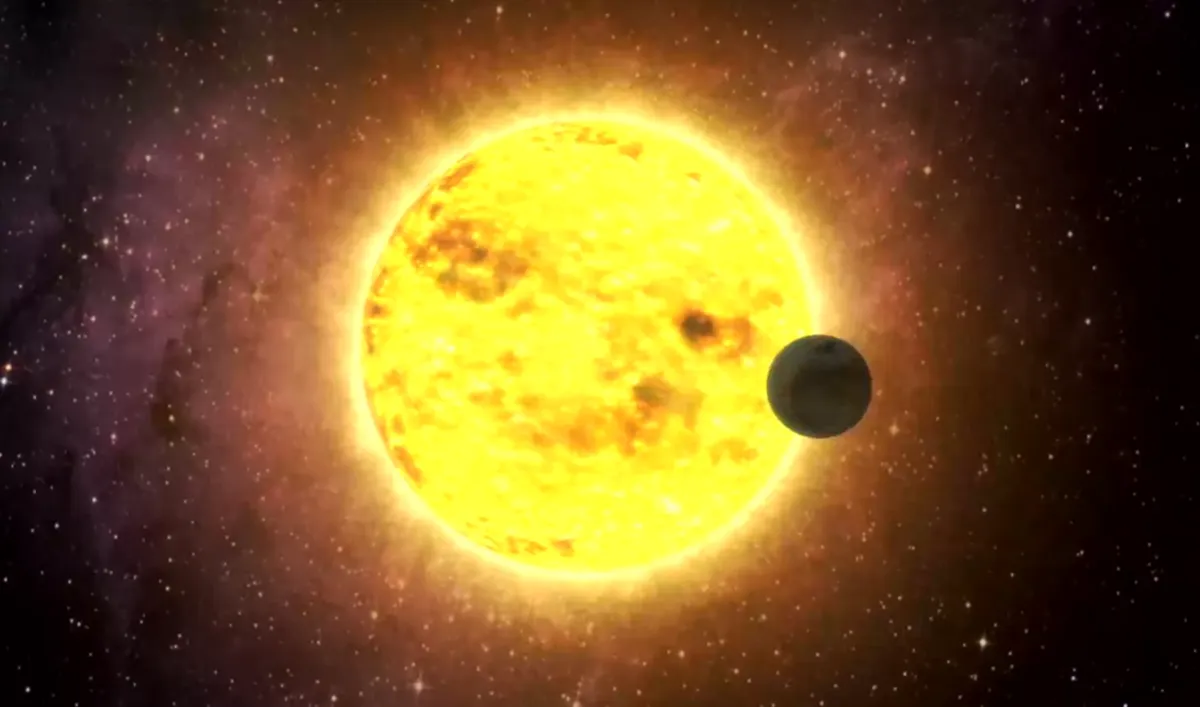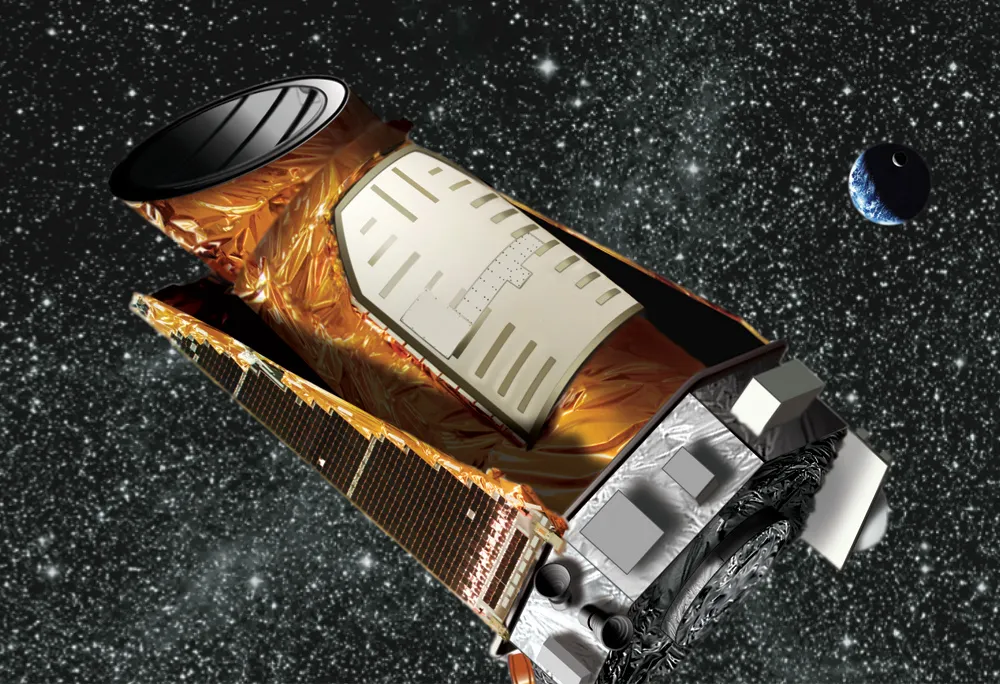Astronomy entered the golden age of detecting exoplanets in the early 1990s. Since then we’ve found almost 4,300. As technology advances we're able to delve deeper, including the ability to detect unseen moons orbiting these worlds: exomoons.
In October 2018, using observations from the Hubble Space Telescope, astronomers announced gas giant planet Kepler-1625b could have a smaller companion orbiting it, although this detection is asyet unconfirmed and remains controversial.
Discovering a dark exoplanet orbiting a dazzlingly bright star across lightyears of space is itself impressive enough; but detecting the presence of even tinier, unseen exomoons around these worlds is formidable.
The trick is to scrutinise the data gathered from transiting exoplanets: those that are detectable by the dip in starlight they cause as they pass in front of their star, from our point of view.
If a transiting exoplanet itself has an orbiting companion, it will rotate around the mutual centre of mass of the planet–moon system.
In effect, if the invisible moon happens to be ahead of the exoplanet during a transit, its gravitational tug will pull the planet forward slightly, and the transit will begin a little earlier than expected, or conversely hold it back.

So precise measurements of the transit timing variations, or TTVs, of an exoplanet can reveal the presence of an unseen exomoon.
For example, in the Earth–Moon system, the orbiting mass of the Moon creates TTVs in our planet’s passage across the solar disc every year (from the point of view of an appropriately positioned alien astronomer) of up to 2.5 minutes.
In its hunt for exoplanets the Kepler space telescope measured the brightness of stars every minute and so could, in principle, have indirectly detected our own Moon with this method, even though the direct transit signature from the Moon is only 7% that of Earth and well below the threshold of what Kepler was sensitive to.
In their hunt for potential exomoons, Chris Fox and Paul Wiegert, both at the University of Western Ontario, Canada, have been trawling through the huge dataset of transiting exoplanets discovered by the Kepler space telescope.
They picked out the eight most promising systems that were known to exhibit TTVs and studied the data for each to test whether an exomoon companion was the best explanation for these orbital variations, or some alternative possibility such as the presence of an unknown, non-transiting planet in the system.

This is how French astronomer Urbain Le Verrier was able to mathematically infer the existence and position of Neptune in 1846. The carefully measured irregularities in Uranus’s orbital position betrayed the existence of a previously unrecognised new planet further out in the Solar System.
Using sophisticated statistical analysis, Fox and Wiegert found that the orbital variations of six of these transiting planets could indeed be accounted for by the gravitational tugs of an orbiting exomoon and that, importantly, such a moon would itself be stable and small enough to have escaped direct detection already.
The TTVs could also be explained by a non-transiting exoplanet, but excitingly astronomers now have a list of half a dozen candidate exomoons to follow up on with further observations and analysis to potentially confirm their existence.
Lewis Dartnell was reading Exomoon Candidates from Transit Timing Variations: Six Kepler Systems with TTVs Explainable by Photometrically Unseen Exomoons by Chris Fox and Paul Wiegert. Read it online at https://arxiv.org/abs/2006.12997.
Prof Lewis Dartnell is an astrobiologist at the University of Westminster. This article originally appeared in the September 2020 issue of BBC Sky at Night Magazine.
